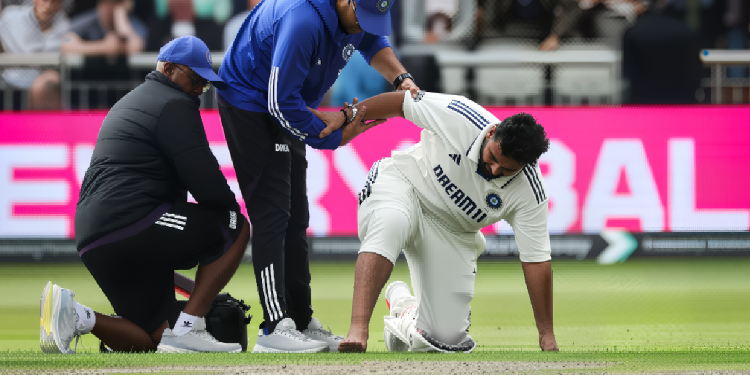In a dramatic and unsettling turn of events, India’s star wicketkeeper-batter Rishabh Pant has been ruled out of action after suffering a painful toe fracture on the very first day of the fourth Test against England. The injury occurred while Pant was attempting a reverse sweep off a fiery delivery from England pacer Chris Woakes. Struck brutally on his right toe, Pant—who was batting confidently at 37 off 48 balls—collapsed in visible pain and had to be rushed off the field in a medical vehicle.
Initially treated on the ground, Pant’s condition worsened and medical scans later confirmed a fracture in the big toe of his right foot. Doctors have advised a minimum of six weeks of rest, effectively ruling him out of the rest of the Test series.
As India grapples with this massive blow, a heated debate has erupted over the lack of substitution provisions in Test cricket for serious injuries. Former England captain Michael Vaughan didn’t hold back, raising a bold question:
“Will India now have to play with just 10 players for the rest of the Test?”
He stressed that the current rulebook is flawed and demanded urgent amendments:
“If a player suffers a clear injury like a broken hand or leg, teams should be allowed a substitute—at least in the first innings.”
But not everyone is on board. Alastair Cook, another England legend, called for caution. Using a hypothetical example, Cook argued:
“What if scans later show it’s just a bruise? Should the player be allowed back in, and what happens to the substitute?”
The injury has once again exposed the vulnerability and rigidity of Test match regulations. The impact was brutal—Woakes’ full-length delivery slammed into Pant’s toe, drawing an unsuccessful LBW appeal but causing visible bleeding and swelling.
This is Pant’s second major injury in the series. Earlier, during the Lord’s Test, a finger injury had kept him from wicketkeeping in England’s entire second innings.
Vaughan’s sharp criticism of ICC’s rules hit hard:
“It’s unfair that a thrilling Test series could now play out as 10 vs 11. When concussion substitutes are allowed, why not serious physical injuries?”
He added,
“If a fracture or muscle tear is clearly visible and verified, substitution must be allowed. Otherwise, the game loses its competitive balance.”
The incident has sparked outrage and debate across the cricketing world. With four days still remaining in this high-stakes Test, India finds itself not just battling England, but also the rulebook. Will the ICC take note, or will Team India be left limping—literally and figuratively—towards the finish line?



Discussion about this post